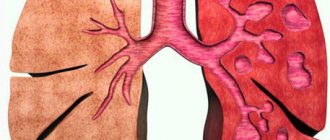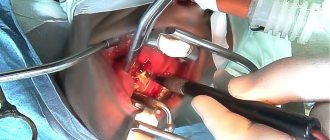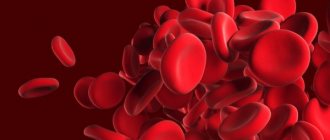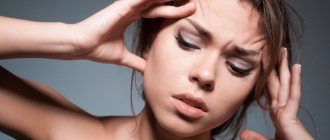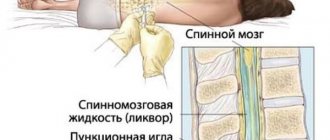Narcolepsy is a disease characterized by disruptions in paradoxical, that is, rapid eye movement (REM) sleep. Narcolepsy manifests itself as increased drowsiness and unexpected “attacks” of sleep. In addition, this disease is characterized by daytime “attacks” of irresistible drowsiness, attacks of a sharp loss of muscle tone while conscious, disordered sleep at night, the appearance of hypnagogic hallucinations when falling asleep, and the occurrence of hypnapompic hallucinations when awakening. Sometimes there may be a transient bodily paralysis right after waking up. Often the described condition appears in young males. According to some assumptions, narcolepsy is of a hereditary nature in combination with an external provoking factor (viral infection).
Types of Narcolepsy
There are two main types of narcolepsy:
- Type 1 includes somnolence and cataplexy. Tests will show that the neurotransmitter known as hypocretin is almost completely absent. This can happen after an infection causes an autoimmune condition.
- Type 2 is mostly associated with excessive daytime sleepiness, but the person usually does not experience sudden weakness.
- Secondary narcolepsy can occur when damage or tumor damages the hypothalamus, the part of the brain involved in sleep.
What kind of disease is this
Narcolepsy is also called Gelineau's disease.
This is a pathology of the nervous system, which consists of disrupting sleep patterns. Moreover, the desire to fall asleep cannot be resisted. The patient can “pass out” at any time: while driving a car, during an exam or at work.
In women, this pathology is rare. In children, the disease is diagnosed very rarely.
This condition negatively affects performance. Moreover, the person himself explains it by insomnia at night or fatigue at work. Sometimes the disease is confused with a symptom of respiratory diseases. All this leads to the fact that treatment is started too late.
A consequence of
narcolepsy is cataplexy . This is a neurological pathology characterized by impaired motor activity. The pathological condition is paroxysmal in nature and manifests itself in the form of sudden immobilization of any part of the body, temporary paralysis of the facial muscles.
Narcolepsy - symptoms
The main symptom of narcolepsy is excessive daytime sleepiness, but it may also include cataplexy, hypnagogic hallucinations, and sleep paralysis. Narcolepsy can also disrupt nighttime sleep patterns. However, in general, a person with narcolepsy usually spends the same amount of time sleeping as a person without it.
Excessive daytime sleepiness
People with narcolepsy typically have a feeling of sleepiness with a tendency to nap at regular intervals during the day, often at inappropriate times. Other symptoms:
- clouding of mind
- poor concentration
- decrease in energy
- memory losses
- exhaustion
- depressed mood
Hypnogic hallucinations
Hypnogogic hallucinations are vivid, often frightening sensory hallucinations that occur while falling asleep and may result from a combination of wakefulness and dreaming that occurs during REM sleep.
Cataplexy
Cataplexy refers to sudden muscle weakness that affects the face, neck and knees. Some may only have mild weakness, while others may fall to the ground. This weakness is temporary, lasting 2 minutes or less, but can lead to falls and other accidents.
Triggers include strong emotions such as surprise, laughter or anger.
Sleep paralysis
Sleep paralysis is the inability to move or speak while falling asleep or waking up. Episodes can last from a few seconds to several minutes. After this episode, the person will fully regain their ability to move and speak.
Characteristic
Narcolepsy is a disease that belongs to the primary forms of hypersomnia, which means that genetic factors play a leading role in the pathogenesis. The pathology is characterized by night sleep disorder. Narcolepsy is a disease that is also called Gelineau’s disease, which is associated with the name of the doctor J. Gelineau, who first described the clinical picture.
A narcoleptic is a person who constantly wants to sleep during the day and has difficulty falling asleep at night. The disease, when a person suddenly falls asleep while walking, occurs in the forms of pathological and imperative drowsiness. In the first case, the patient is able to fight the approaching attacks of falling asleep by actively participating in current events, making efforts to concentrate and increase the level of alertness, for example, through physical exercise.
The imperative form is a state of falling asleep that requires unquestioning submission and cannot be resisted by will. The patient is not able to resist attacks of falling asleep that overtake him suddenly. Such patients unexpectedly fall asleep while eating, walking, during a conversation, or in other situations that are not normally associated with rest.
Narcolepsy - causes
The exact cause of narcolepsy is unknown, but is probably related to hypocretin
or
orexin
. This is a chemical that the brain needs to stay awake.
Certain genetic characteristics may increase the risk of narcolepsy. Narcolepsy is likely the result of a combination of genetic and environmental factors.
Hypocretin is a neurotransmitter that controls whether a person is asleep or awake by affecting different groups of nerve cells and neurons in the brain. The hypothalamic region of the brain produces hypocretin.
People with narcolepsy type 1 have low levels of hypocretin, but those with narcolepsy type 2 do not.
Hypocretin is necessary to stay awake, and when it is deficient, the brain allows REM sleep to interfere with normal periods of wakefulness. In people with narcolepsy, this leads to both excessive daytime sleepiness and nighttime sleep problems.
Traumatic brain injury, tumor, or other conditions affecting the brain can also cause narcolepsy.
Affected Populations
The exact number of people with narcolepsy in Russia is unknown. One estimate puts the prevalence at 0.03 to 0.16 percent of the total population in various ethnic groups worldwide. One US study found the incidence of new cases of narcolepsy to be 0.74 per 100,000 person-years in the general US population. The disorder is estimated to affect 1 in 2,000 people in the general population. However, because narcolepsy is often unrecognized or misdiagnosed, determining its true incidence in the general population is difficult.
Narcolepsy can develop at any time from early childhood to age 50. Two peak periods were identified; one is about 15 years old and the other is about 36 years old. Some researchers believe that narcolepsy is underdiagnosed in children. Narcolepsy usually lasts a lifetime. Although the nature and severity of the symptoms experienced by the patient may change over time, the disease does not progress.
Diagnostics
Doctors may initially misdiagnose narcolepsy. This is because it resembles other conditions such as:
- psychological disorder
- sleep apnea
- restless legs syndrome
It may take 5-10 years to confirm the diagnosis.
To determine whether a person has narcolepsy, the doctor will:
- study anamnesis and sleep history
- will conduct a physical examination
- will perform sleep studies such as polysomnography and multiple sleep latency testing
Sleep studies can confirm the diagnosis of narcolepsy.
The person will undergo polysomnography and sleep in the clinic overnight while the machine measures sleep patterns.
The multiple sleep latency test will take place several hours after the polysomnography.
Questions your health care professional may ask include:
- Do you sleep most of the day?
- How many hours do you sleep at night?
- Do you feel rested after waking up?
- Does sleep refresh you?
- Do you have unusual sensations when you fall asleep?
- Have you ever been unable to move when you fell asleep or when you woke up?
- Do you have muscle weakness or collapse when you laugh or get angry?
Keeping a sleep diary can also help in diagnosis.
Polysomnography
The disease can be diagnosed using polysomnography, which is accompanied by EEG recording and MSLT test. An in-depth and most accurate study of pathology is carried out by a somnologist in the laboratory. The polysomnography technique involves a thorough study of the patient's night sleep. To do this, you need to spend the whole night in a specially designed room under the supervision of a doctor. Using this technique, it is possible to detect a violation of the alternation of sleep phases: an increase in the duration and frequency of the REM sleep phase. The technique also allows you to eliminate similar sleep disorders.
Narcolepsy - treatment
There is currently no cure for narcolepsy, but medical treatment and lifestyle advice can help.
One way to manage narcolepsy is through behavior modification. A person can take a 15-20 minute nap during the day. Your doctor may also prescribe a central nervous system stimulant to prevent drowsiness, although the medications will not be effective.
Options include:
- Modafinil
- Armodafinil
- Dexamphetamine
- Methylphenidate
The drugs may cause irritability, restlessness, changes in heart rate, and other side effects.
Sodium oxybate is used to treat excessive daytime sleepiness, which has few side effects and does not interact well with other medications.
Antidepressants can help treat cataplexy, but have side effects such as high blood pressure and changes in heart rate.
Your doctor may adjust your treatment over time as your symptoms change.
Narcolepsy can have a significant impact on quality of life. Any activity that may pose a threat to life, such as driving, should be avoided.
The following lifestyle tips may help:
- Nap during the day.
- Maintain a regular sleep schedule.
- Follow the treatment plan recommended by your doctor.
- Do the exercises every day for at least 20 minutes, but stop exercising 4-5 hours before bedtime.
- Avoid caffeine or alcohol several hours before bed.
- Avoid smoking, especially before bed.
- Avoid eating heavy meals before bed.
- Relax before bed, for example, take a bath.
- Make sure the bedroom is at a comfortable temperature.
- Take precautions while driving.
How to overcome sudden sleep syndrome
It is clear that if signs of narcolepsy are detected, it is necessary to take measures to cure it. However, at the current stage, medicine can only mitigate the symptoms and improve the patient’s quality of life, while the cause of the disease cannot yet be eliminated.
In European countries, psychostimulants such as Methamphetamine, Modafinil, Methylphenidate and some others are used to treat narcolepsy. Modafinil is one of the most effective drugs for eliminating drowsiness, which is why it is used especially often. In Russia, however, psychostimulants are not used in medicine, so there is no effective therapy for narcolepsy in our country yet.
Atomoxetine, a non-stimulant norepinephrine reuptake inhibitor, may sometimes be used. Some antidepressants, serotonin reuptake inhibitors, and hypnotics are also used.
Recently, sodium oxybutyrate has become famous - an effective remedy that fights cataplexy and other manifestations of narcolepsy. The drug has been approved by the US Food and Drug Administration. The United States has also developed a nasal spray with orexin, which many are pinning their hopes on: perhaps it will be possible to treat the disease itself, and not just the symptoms. This spray has already been tested on monkeys, which has shown its high effectiveness. Of course, the military was primarily interested in the development; after all, lack of sleep is a fairly serious problem in the army, and during combat operations this is a completely normal phenomenon.
But medications alone are not enough. It is necessary for the patient to take care of his lifestyle. To do this, you need to eliminate stressful situations if possible, normalize your sleep and wakefulness, set aside time for daytime sleep, and start eating right. Avoid engaging in hazardous activities, including driving. It is advisable to undergo psychotherapy sessions that will help eliminate internal problems that interfere with normal sleep.
The patient may be prescribed physiotherapeutic procedures:
- Encephalophonia is a recording of brain activity converted into sound;
- Hydrotherapy;
- Phototherapy (exposure of the patient to light);
- Massage, especially acupressure.
Fans of traditional medicine can also try to influence narcolepsy with their own methods. This is primarily herbal treatment. For example, an infusion of hop inflorescences. Another well-known remedy is motherwort, which has a sedative effect. Chamomile can also help by relieving headaches and nervous tension. Primrose is a plant that allows you to restore strength when overworked. Aromatherapy can be used; fragrant essential oils calm the nervous system, improve sleep, and reduce irritability. But all these folk remedies also affect the symptoms without affecting the underlying cause of the disease. They can only be used in conjunction with drug treatment, otherwise they will not have an effective effect.
Disability
To obtain various degrees of disability, depending on the indicators, you need to undergo a number of studies:
- electroencephalography (EEG) monitoring;
- experimental psychological research.
Also, if necessary, you should undergo examinations such as:
- consultation with a psychologist and ophthalmologist;
- computed tomography (CT);
- magnetic resonance imaging (MRI).
Disability with narcolepsy is possible for the following reasons:
- general illness;
- symptomatic narcolepsy as a consequence of injuries (military injury, work injury, illness in military service).
In Russia, getting any disability group with a diagnosis of “narcolepsy” will be very problematic, because it is not accepted as a special disease. You need to find out exactly your case and consult with doctors.
This is the only way to find out about the possibility of disability. But if you were able to get a group or just want to know which one you could get, the table below is for you.
| Groups | Forms and vital activity | Criteria for disability |
| III group | Mild narcolepsy and mild disability | Opportunity for light work, moderate monitoring of one's own behavior and first-degree training |
| Group II | Moderate or severe form of narcolepsy with frequent attacks of sleep and serious impairment of life functions | Oppressed opportunities for second-degree labor activity and control over one’s actions |
| Group I | Rarely detected in the most depressing symptoms of narcolepsy with repeated cases of falling asleep, combined with attacks of cataplexy and pronounced impairment of vital functions | Third degree impairment of self-care ability |
Interesting
It recently became known that Leonardo da Vinci suffered from narcolepsy. He developed an irresistible drowsiness after three years spent in the dungeon of the Doge's Palace. The great artist and thinker not only did not allow the disease to break him, but also learned to benefit from it for creativity. To prevent attacks from taking him by surprise, Leonardo invented a wheelchair that was always nearby, and there was also paper and a pencil nearby. As soon as the artist woke up, he immediately captured the visions that visited him during the attacks.
Strange story
Of course, not all sleepiness is narcolepsy. There are times in any person's life when the need for sleep increases. Here, for example, is the story that happened to the author of these lines in his youth.
After two unsuccessful attempts to become a student and service in the army, I entered the university. The day before I had an affair with one girl, we were going to get married, but then we broke up. I was very painfully experiencing the breakup and then, while studying in my first year, I suddenly felt a strange state...
I was attacked by a stupefying drowsiness, I could not stay awake for more than thirty to forty minutes, a maximum of an hour, then I inevitably fell asleep. Moreover, it came at the most inopportune time, in the most inopportune place: on the subway, at a lecture. To prevent this from happening, I decided to get enough sleep: during recess I would find an empty classroom and, sitting down on three pushed-together chairs, instantly fell asleep. Luckily, I only needed 5-10 minutes to fall asleep. Then I got up, invigorated, and could exist normally for about another hour. Then something like dizziness began again and it was necessary to urgently take a horizontal position. This state lasted two or three days and passed.
Ten years later, these attacks of drowsiness were repeated after another stress - the death of my father. On weekends I slept around the clock. I fell asleep on the train and in the subway. So, maybe this is narcolepsy?
At the Center for Somnological Research of the Ministry of Health and Social Development of the Russian Federation, Professor Yakov Iosifovich Levin explained to me that attacks of drowsiness recurring once every ten years are unlikely to be a disease. Normal stress from prolonged overexertion manifests itself differently in different people. Some cannot fall asleep, others, on the contrary, sleep like marmots, and this helps them recover and come to their senses. In patients with narcolepsy, attacks are much more severe and occur more often.
